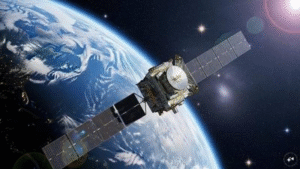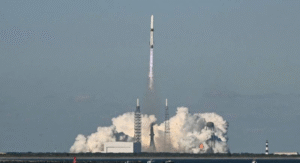Amazon Uses AI to Supercharge Warehouse Robots and Redefine Logistics
SEATTLE (Washington): E-commerce giant Amazon has unveiled a new wave of AI-powered robots designed to accelerate warehouse operations and redefine the future of fulfillment logistics — sparking debate about how increased automation could affect the human workforce.
At a demonstration event in Silicon Valley, Amazon showcased its latest robotic systems, including a new “Blue Jay” robotic arm, developed to pick, sort, and consolidate items efficiently at a single workstation. The company said artificial intelligence is not only transforming how its warehouses operate but also accelerating innovation cycles at unprecedented speed.
According to Amazon Robotics Chief Technologist Tye Brady, AI helped reduce the design-to-deployment timeline for the Blue Jay system by two-thirds — from three years to just over one.
“That’s the power of AI,” Brady said. “We’re on a trajectory to supercharge the scale and impact of innovation across our operations.”
Blue Jay and the Rise of AI-Enhanced Robotics
The Blue Jay prototype, currently being tested in South Carolina, follows Amazon’s earlier introduction of “Vulcan”, a robot equipped with tactile sensors that give it a “sense of touch.” Vulcan has already been assisting in fulfilling customer orders in select U.S. warehouses.
Together, these innovations mark Amazon’s most ambitious step toward fully integrated AI-driven logistics, where robotic systems handle repetitive physical tasks while software agents manage workflow optimization.
Brady emphasized that the goal is not to replace human workers but to make their jobs safer and more efficient.
“To our frontline employees — these systems aren’t experiments. They’re real tools designed to make your work smarter, safer, and more rewarding,” he said.
Automation Raises Workforce Concerns
However, a report by The New York Times this week highlighted growing concerns that the rapid deployment of robotics could significantly reduce hiring needs at Amazon. The report estimated that AI and automation could allow the company to avoid hiring around 160,000 workers over the next two years, even as its retail operations continue to expand.
Analysts suggest that while Amazon continues to tout job creation, its long-term workforce strategy may shift toward high-tech roles in robotics, maintenance, and engineering, reducing reliance on seasonal and manual labor — especially during peak shopping periods such as Black Friday and Cyber Monday.
Beyond Warehouses: AI for Delivery Operations
Amazon’s AI expansion extends beyond warehouse walls. The company demonstrated AI-powered smart glasses equipped with cameras and augmented reality (AR) displays to help delivery drivers navigate routes and receive real-time updates.
In addition, Amazon introduced an AI management agent capable of coordinating robots and human teams, optimizing workflow efficiency across large distribution centers.
Industry experts say Amazon’s AI push underscores its strategy to maintain an edge over competitors like Walmart, Alibaba, and JD.com, all of which are heavily investing in automation to cut costs and speed up delivery.
Despite the controversy, Amazon insists that technology and human labor will continue to coexist. As Brady put it:
“We’re not taking people out of the equation. We’re giving them better tools.”













